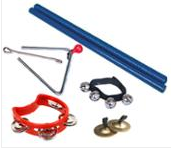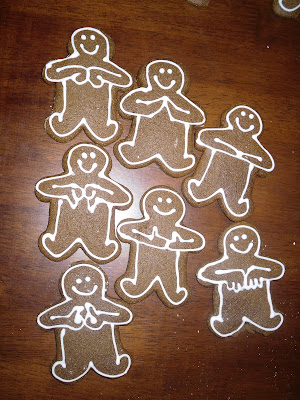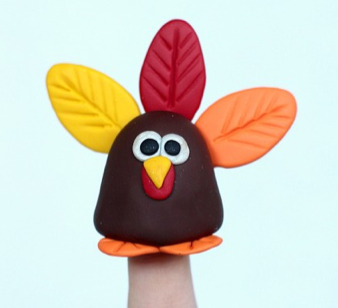It's holiday season, and that means you have an opportunity to choose thoughtful gifts for the children in your life. Want to encourage music learning and help create a musical environment at home? Peruse our gift guide for those musical kids and find several great items right at the Let's Play Music Webstore.
Tuition for Music Classes
If Grandma or Aunt Betsy asks what the kids could use this year, be sure your bases are covered for tuition. Having some or all of a class paid for is a clutter-free gift that stays with your child forever. Don't forget how easy it is to offer a semester of Sound Beginnings to toddlers and preschoolers on your gift list, too! Need to find a teacher for those nieces and nephews? Use our FIND A TEACHER button.Big Ticket Instruments:
A Piano Or Keyboard:
 If this is your first year in Let's Play Music, you'll need a piano or keyboard at home next year. Check out our guide on how to choose a piano or keyboard. Warehouse clubs like Costco often have deals on 88-key digital pianos during the holiday season, and Target has had Black Friday keyboard deals for the past several years.
If this is your first year in Let's Play Music, you'll need a piano or keyboard at home next year. Check out our guide on how to choose a piano or keyboard. Warehouse clubs like Costco often have deals on 88-key digital pianos during the holiday season, and Target has had Black Friday keyboard deals for the past several years.An Autoharp: You might also enjoy an autoharp at home, especially since the portable instrument is fun to take along on camping trips and pull out at family gatherings.
A Metronome: Finally, by the 3rd year of Let's Play Music, your student will be ready for a metronome. There are some fun games you can play with a metronome, but of course it will be a tool for improving musicianship skills. There are many economical options and even apps. A nice traditional metronome can last a lifetime, so you might consider getting a top-notch one.
Rhythm Instruments:
The Gift of Your Time: Now that you've got the piano taken care of, it might be fun to have a "rhythm box" of instruments accessible to your child. Help him learn the rules about instruments (handle them gently, put them in the box when you're done, ask politely to use what someone is holding) while playing along to favorite songs with the family. Of course you'll be able to recreate the rhythm games from all years of class (and even find more online) that you can play to improve rhythm and reading. Start a rhythm tradition; build a time into your day when the family can giggle and dance to a song, using the instruments to keep the beat or play a rhythm echo game. The instrument itself is the first gift, your instruction on how and when to use and enjoy it is the second!
Tambourines and Rhythm Sticks are must-haves in a rhythm box. The Let's Play
Music Holiday Webstore has a set of high-quality instruments. Rhythm Band is another vendor with sets and individual instruments.
A Gathering Drum by Remo is an all-time favorite. They have several other items for children, too.
Boomwhackers from the Let's Play Music Holiday store are fun and sturdy and can be used along with your tone bells and many additional family games and activities!
Echo-microphones encourage kids to sing, and don't cost much.
Kazoos and Harmonicas make easy stocking stuffers, too.
Electronics:
CD Players or Ipod Docks: If you don't already have a device for your child to operate when he would like to play his Let's Play Music songs (and other music), this would be a worthwhile gift. Teaching your child how to operate the equipment to turn on songs he would like to hear empowers him to make music part of his day, and puts a smile on your face when you hear the sounds of your independent little one off in his room singing to his CD (and perhaps playing bells.)
During the second and third year of Let's Play Music, you'll also want a dock or CD Player near the piano so your child can play along with the recordings- here's your chance to get prepared!

MP3 Players: For those worried about replacement costs, MP3 players can often be found cheaply ($15 and less) and can be loaded up with carefully-chosen Let's Play Music and other songs. It's worthwhile to choose child-safe headphones or educate your child about safe volume levels on headphones before turning him loose.
Music to Listen To:
Performing Arts Tickets: Nothing sends the message "we care about music" quite as succinctly as giving your child tickets to see live musical performers. Check your local symphonies and performance halls for performances that would be especially child-friendly (and respect age limits on those that are not), but don't overlook college, high school and community performing arts centers, too. If there is a performing group you think your child may aspire to joining in the future, it's never to early to become a fan; find out where they will perform and take your child to check it out.
Music CDs:
 You
can help your child improve musicality and music literacy by giving her
opportunities to listen to lots of music. Don't make the mistake of
skipping over "kids" music in an effort to speed your little Einstein to
success. Simple, easy-to-sing songs have a definite place in your
child's learning curve; she'll probably appreciate that she CAN easily
discern the melodic patterns and chord progressions. KIMBO has a huge collection of traditional rhymes and sing-a-longs; my preschoolers always especially love the "Six Little Ducks" album.
You
can help your child improve musicality and music literacy by giving her
opportunities to listen to lots of music. Don't make the mistake of
skipping over "kids" music in an effort to speed your little Einstein to
success. Simple, easy-to-sing songs have a definite place in your
child's learning curve; she'll probably appreciate that she CAN easily
discern the melodic patterns and chord progressions. KIMBO has a huge collection of traditional rhymes and sing-a-longs; my preschoolers always especially love the "Six Little Ducks" album.  A
large number of children's artists are writing songs that parents enjoy
too. You can browse the CD collection at your library before you buy,
or try some of my children's suggestions:
A
large number of children's artists are writing songs that parents enjoy
too. You can browse the CD collection at your library before you buy,
or try some of my children's suggestions:Laurie Berkner
Brady Rymer
Ralph's World
Stevesongs
Putumayo Kids :world music
Dog on Fleas
Imagination Movers
Justin Roberts
Lunch Money
Milkshake
Recess Monkey
Karaoke Machine: Encouraging your child to sing out loud during music class might be as easy as encouraging her to sing out at home! Consider a karaoke machine for the family to enjoy with some kid and adult favorites.
Encourage Classical Music:
 Beethoven's Wig Albums: All this children's music talk doesn't mean you should avoid classical music. I adore the albums by Beethoven's Wig,
which put silly lyrics to popular classical tunes. My kids sing along
with joy, then eagerly listen to the traditional tracks with no lyrics,
then demand "I MUST learn to play this piece on piano!"
Beethoven's Wig Albums: All this children's music talk doesn't mean you should avoid classical music. I adore the albums by Beethoven's Wig,
which put silly lyrics to popular classical tunes. My kids sing along
with joy, then eagerly listen to the traditional tracks with no lyrics,
then demand "I MUST learn to play this piece on piano!" Maestro Classics: Listen to the London Philharmonic play and hear a familiar story to go with the music in each of the Maestro Classics. There are even activity pages. Give it a look!
Maestro Classics: Listen to the London Philharmonic play and hear a familiar story to go with the music in each of the Maestro Classics. There are even activity pages. Give it a look! Books about Music: Encourage music with a few books about instruments and fun stories about the orchestra. Here is a top ten list to get you started.
Composer Coloring Books: There are several books, so you can choose one for each child in your family to color while learning about our favorites.
Scarves for Dancing: Encourage the experience of classical music with our Sound Beginnings "Smart Moves", or make up your own dances to go along with favorite music. Scarves to dance with make it all the more fun.
Puppet Theaters: Pinterest can give you ideas for making your own puppet theater, or you can purchase a lovely one to showcase the many classical shows you'll know by the end of Let's Play Music!
Additional Learning :
8-Note Bell Music: If you're wishing for more songs to play on your bells (or boomwhackers), the best place to start is with these 2 songbooks from the Let's Play Music Holiday shop.
Extra Sheet Music: Peruse your local music store for sheet music that will interest your child. I adore playing duets with my kids, so we have enjoyed Alfred's Chord Approach Duet book . The Faber Accelerated Piano Adventures Pop Repertiore is exciting and fun and just right for our third year students.
Giant Piano: Your physically active musician will be inspired by youtube videos of giant piano performers dancing their way through the classics.
Educational Apps: If you have a device, your child might enjoy a few new apps all about making music.
Toy Piano: If you just can't resist the cuteness, you might give a toy piano to your preschooler. I'm told the keys on the Schoenhut pianos are full-size, which makes me happy because your child's fingers will develop muscle memory for these distances. The 25-key pianos will at least have enough keys to play the Red, Yellow, and Blue chords with one hand, but the 15-key pianos will frustrate your child when she tries to play Yellow with no low B. One parent desperately wanted this toy but worried that it would somehow stunt the actual piano learning. I'm of the opinion that anything that draws your child to play and experiment with music (and practice real chords) can't be bad!
Giant Staff: Love games on the giant staff mat in class? Make one of your own to play with!
If you have (or hope to have) a musical child, I hope you've been inspired to find at least one gift this season to nurture the love of music learning! Happy Holidays!
-Gina Weibel, M.S.
Let's Play Music teacher









































